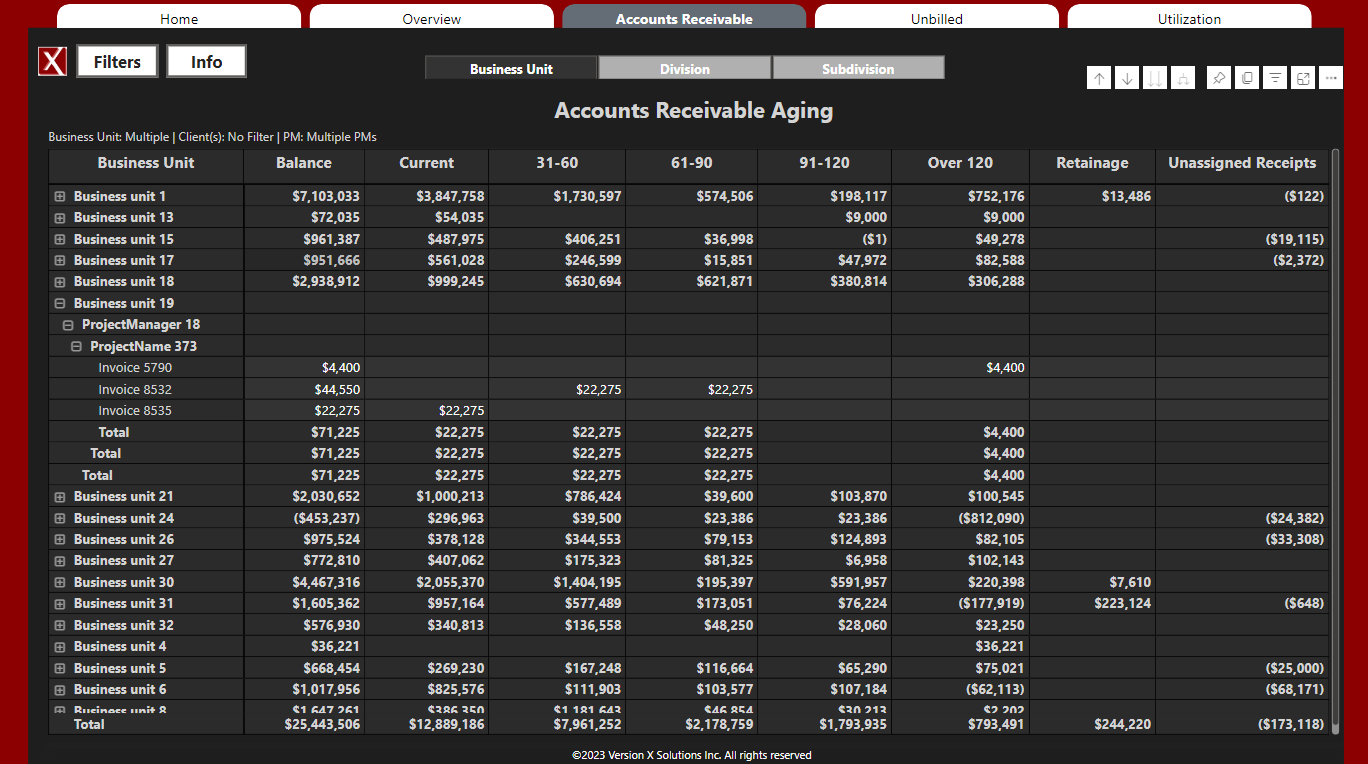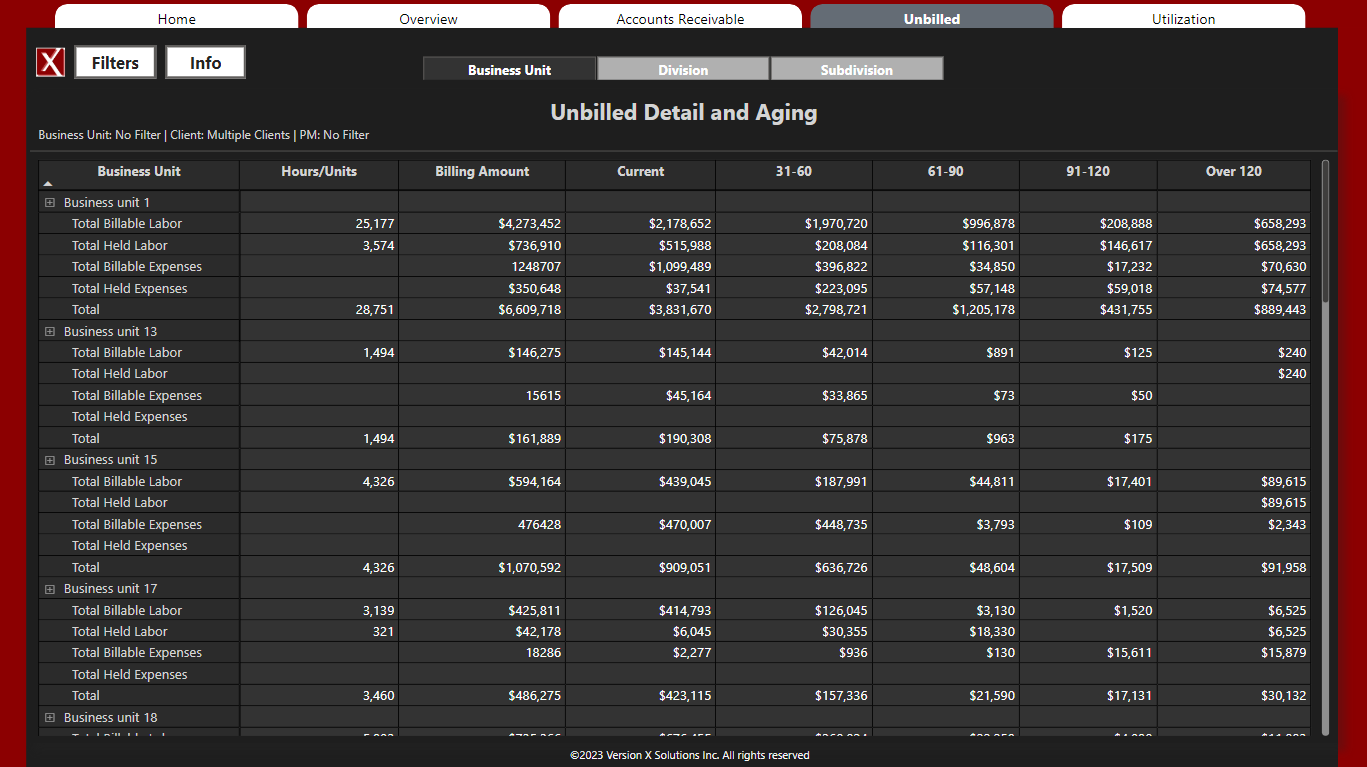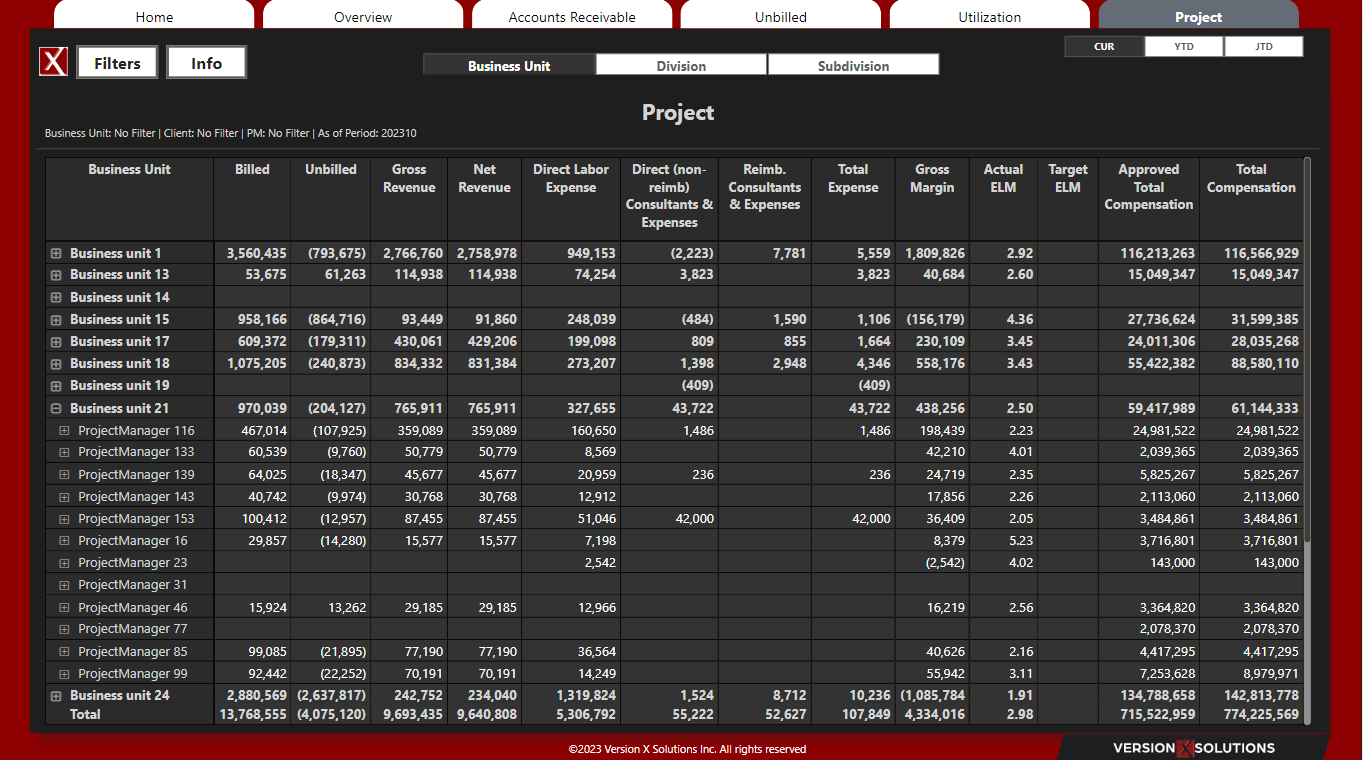
Version X Solutions transforms Deltek Vision and Vantagepoint data into powerful, custom and common reports with Power BI. Below we showcase our suite of preconfigured reports with interactive versions for you to explore. Our team can create any additional report you need, all integrated with your Deltek data for up to 8 daily refreshes.
See why A&E firms use Version X Solutions to analyze their Deltek data



Accounts Receivable Aging
Welcome to the Accounts Receivable Report, a vital tool for tracking and managing your organization’s receivables. Start with a broad overview by exploring the high-level hierarchy of Business Unit, Division, or Subdivision. For more in-depth analysis, drill down into the details starting with individual Project Managers, then specific projects under each, and finally down to the individual invoices.

Customize your view using advanced filters accessible via the ‘Filters’ button in the top left corner. These filters allow you to examine data by Project Manager, isolate receivables by specific clients, categorize receivables using the aging bucket filter to identify overdue accounts, and focus on individual projects to assess their impact on the accounts receivable status. This layered approach ensures a comprehensive understanding of your receivables and their management.

Unbilled Detail and Aging
This report provides an in-depth understanding of unbilled transactions across your business hierarchy. Start with a broad perspective by exploring high-level categories like Business Unit, Division, or Subdivision, then drill down to specifics like clients and contract numbers for detailed analysis. Tailor this information to your needs using the ‘Filters’ button in the top left corner.
Available filters include isolating data by Client to assess unbilled activities, filtering by Project Manager to evaluate their oversight, utilizing the Aging Bucket to understand the duration of unbilled activities for better cash flow management, and focusing on specific Projects to analyze their impact on overall unbilled status. This strategic, hierarchical approach, coupled with advanced filtering, offers comprehensive insights into managing and resolving unbilled transactions.
Utilization
This utilization report is presented in a matrix table format, offering a clear and concise view of employee productivity and engagement. Navigate through different levels starting with top-level views of broader categories like Business Unit, Division, or Subdivision to understand overall utilization. Then, drill down to specific Employees and their projects in the first column for detailed insights.

Utilize the advanced ‘Filters’ button in the top left corner to customize your view. Filter options include focusing on specific Business Unit, Division, and Subdivision to analyze utilization within these areas, selecting timesheet periods to observe engagement trends, and filtering by individual employees to assess their project involvements and productivity. This approach provides a comprehensive understanding of how effectively resources are being utilized across the organization.

Project
This project report is structured as a matrix-style dashboard, providing an intuitive overview of project engagement and workforce productivity. Begin with top-level insights, focusing on broad organizational layers like Business Units, Divisions, or Subdivisions. Then, zoom in on the specifics of projects and individuals listed in the first column to understand their roles and contributions.
Utilize the filtering tools located in the top right, including buttons for “Current,” “Year to Date,” and “Job to Date,” to conduct temporal analysis of project data and team performance. Further tailor your view with additional filtering options like Business Unit, Client, and Project Manager/Principal to examine project dynamics within specific segments, or focus on individual projects by name to analyze their scope, team involvement, and progress. This comprehensive tool is designed for effective monitoring and analysis of project-based work and employee utilization within the organization.
